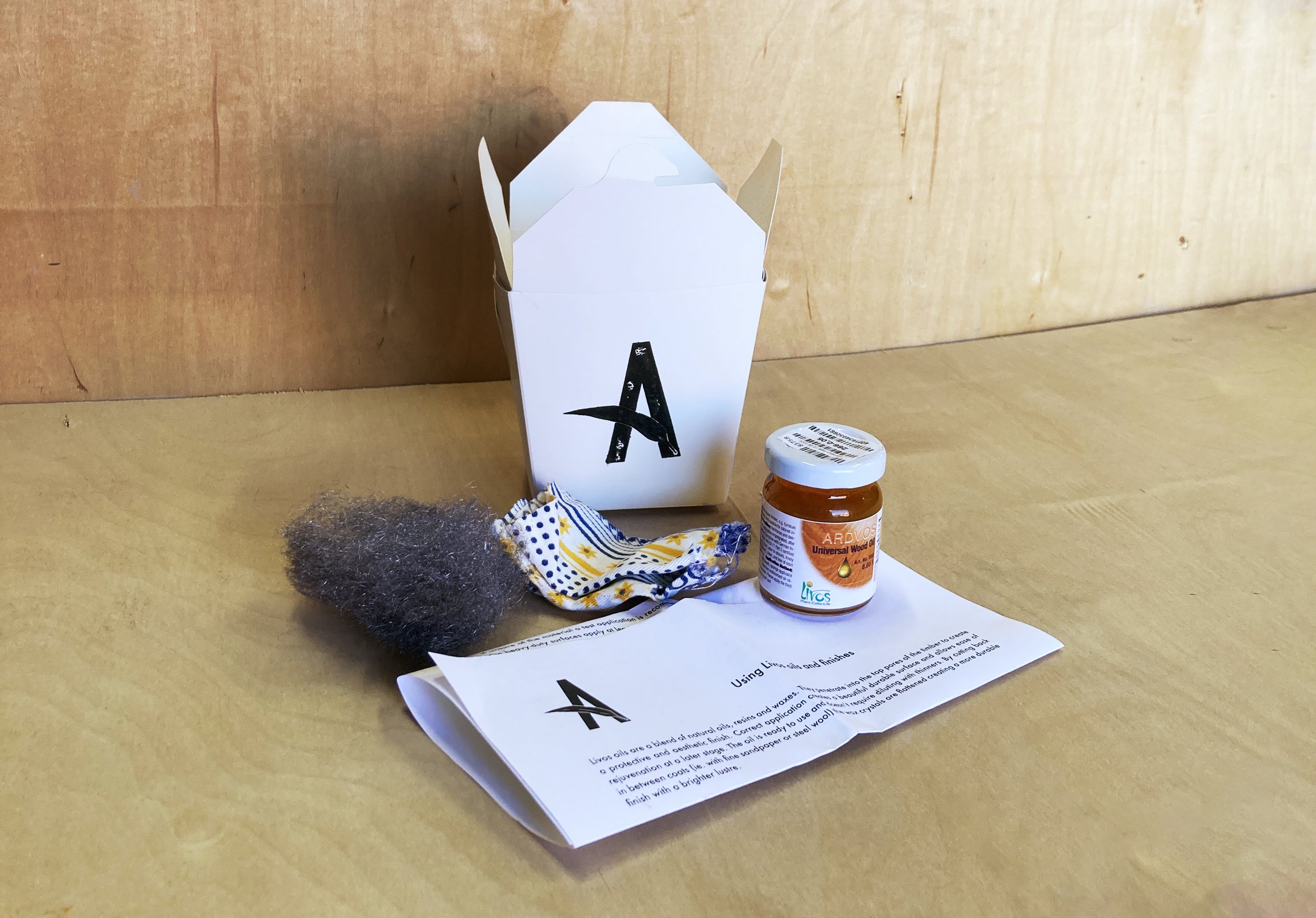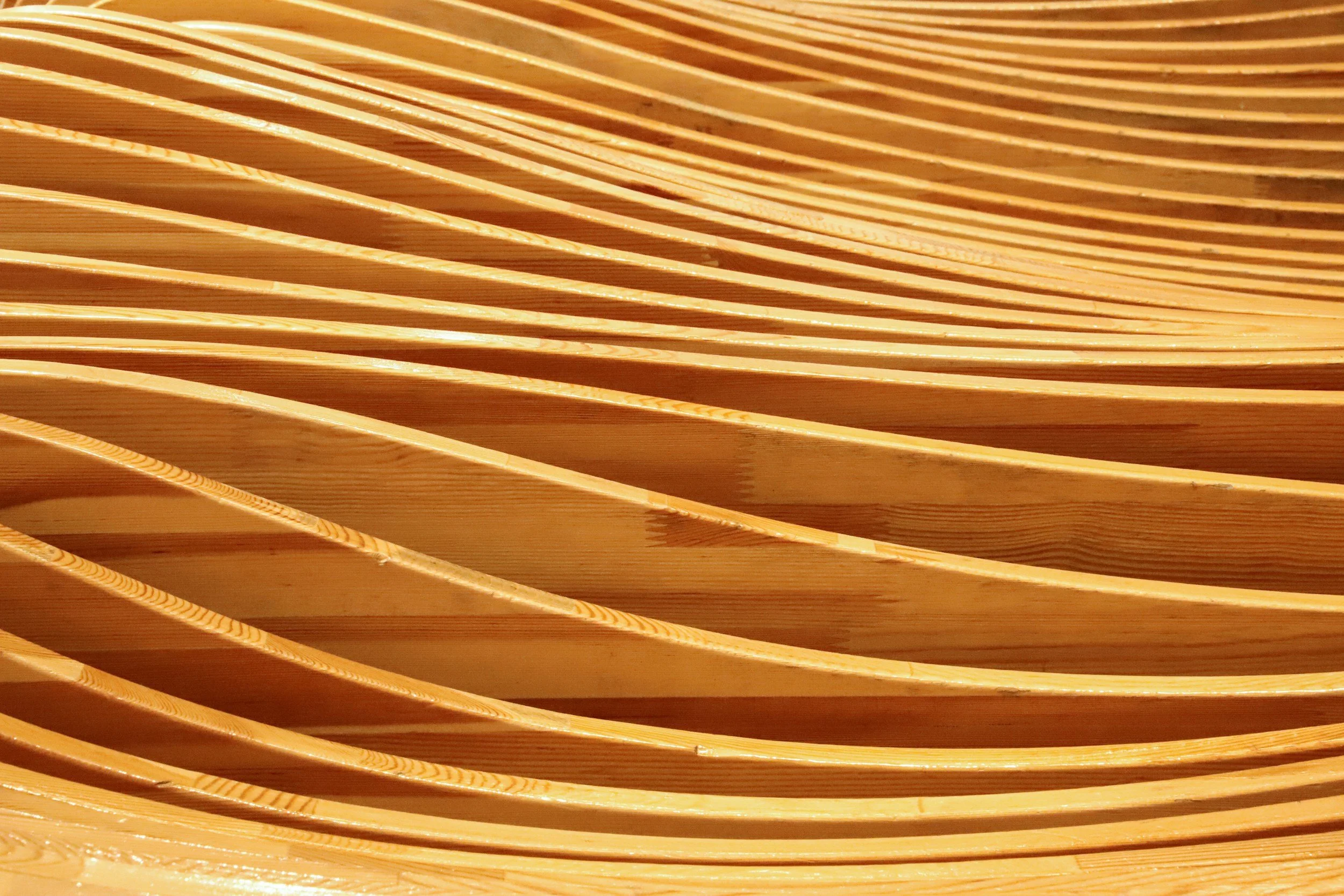Oils, waxes, varnishes and more – which finish should I use?
When getting started with carpentry it can be overwhelming figuring out how to finish your work, and why you even have to finish your work at all. When we’re done working on the wood part of our project, the surface of the timber can easily become damaged, stained, or dirty without putting a finish on it. It’s this final step that seals in all that goodness and keeps your timber nice and safe.
Different finishes will work in different ways – whether they’re applied with a brush, cloth, or spray, if they penetrate into the wood or sit on the surface, and whether or not they’re able to be touched up or if you need to refinish the whole piece again in the future.
Wax
Waxes are a quick and easy way to finish your work, or to touch up an existing finish. Wax finishes come in several kinds, with the most popular being carnauba or beeswax, and are often mixed with other ingredients to help soften them or make them easier to apply before curing. Wax will sit on the surface of your work, with the finish easily topped up in the future, however they can take a bit of work to apply and will need to be buffed in order for a sheen to appear on the surface. Other finishes may also not stick to wax, so while you can add a wax coat to the top of another finish such as an oil, the inverse is not always possible.
We stock and love Gilly’s Cabinet Maker’s Wax in store, which is a beeswax-based wax that is perfect for finishing or touching up your work.
Quick-drying oils
Quick-drying oils are oil-based finishes that contain other ingredients that help them dry faster. Standard finishing oils provide a beautiful surface finish, but can take days, weeks, or even months to fully cure out, and mean long periods in between recoats.
There are many different kinds of drying agents that are added to oils, which can be naturally derived or synthetic. Always check the product safety data sheet to make sure there’s nothing harmful or hazardous in the finishes you’re using, and use proper PPE like gloves and masks when applying finishes.
Oils are a penetrating finish, which means that the oil soaks into the timber and creates a reaction. Even so, many oils are able to be touched up without much issue, and can provide a long-lasting and beautiful finish for your timber and furniture.
Our favourite quick-drying oils are Livos’s Ardvos Universal Wood Oil and Kunos Countertop food safe oils, and we use them for all of our courses too! These oils contain a little bit of wax in solution too, which results in a beautiful wax finish on top of the oil coat.
Slow drying oils
Many naturally derived oils are slow to soak in and to dry out, but can also provide a beautiful and long-lasting finish. With slow drying oils, always make sure to read the instructions for reapplication time, as it can be quite a long period of time!
Our favourite quick-drying oil is natural Tung Oil, which we stock in store and is great for timber, decking, concrete, furniture and more!
Non-drying oils
Some oils don’t dry out at all. Oils like olive oil, mineral oil, coconut oil and others should be used sparingly on timber as they will never fully cure, and in the cases of vegetable oils like olive or coconut oil, can go rancid if not stored correctly. Mineral oil is often used as a finish for kitchen utensils, bowls, and chopsticks, but a very light coat should be used.
Varnishes
Varnish is a commonly used generic term for a range of wood finishes that combine resins, oils and solvents. These ingredients can be naturally derived, synthetic, or a combination of the two. For example, shellac is a naturally derived varnish that comes from bugs and is then processed into flakes that are dissolved in a solvent, whereas polyurethane is plastics in a suspension that dries to leave the plastic as a smooth finish coating. Different varnishes will have different appearances and application methods.
Oil/Varnish blends
Products like Danish Oil and other trademarked terms are an oil/varnish blend, rather than a pure oil. It’s good to always check the ingredients and instructions to make sure your finish will end up the way you want it!
Paint
We won’t get into detail about all the different types of paint finishes that are available, but there are so many! Acrylic and oil paints two of the most common, but there are other kinds of paint finishes that are possible too like milk paints.
We hope this guide shines some light on the different kinds of finishes available and helps guide you towards finding the right finish for your project!
Not sure where to start? Try an Among The Trees finishing kit, now in store
Purchase a finishing kit with your choice of Livos’ 0.05L finish, either: Universal Wood Oil or Countertop Oil. Comes with steel wool and a clean second hand rag, as well as finishing instructions.
The kit with a jar of finish is $15 and while stocks last.







